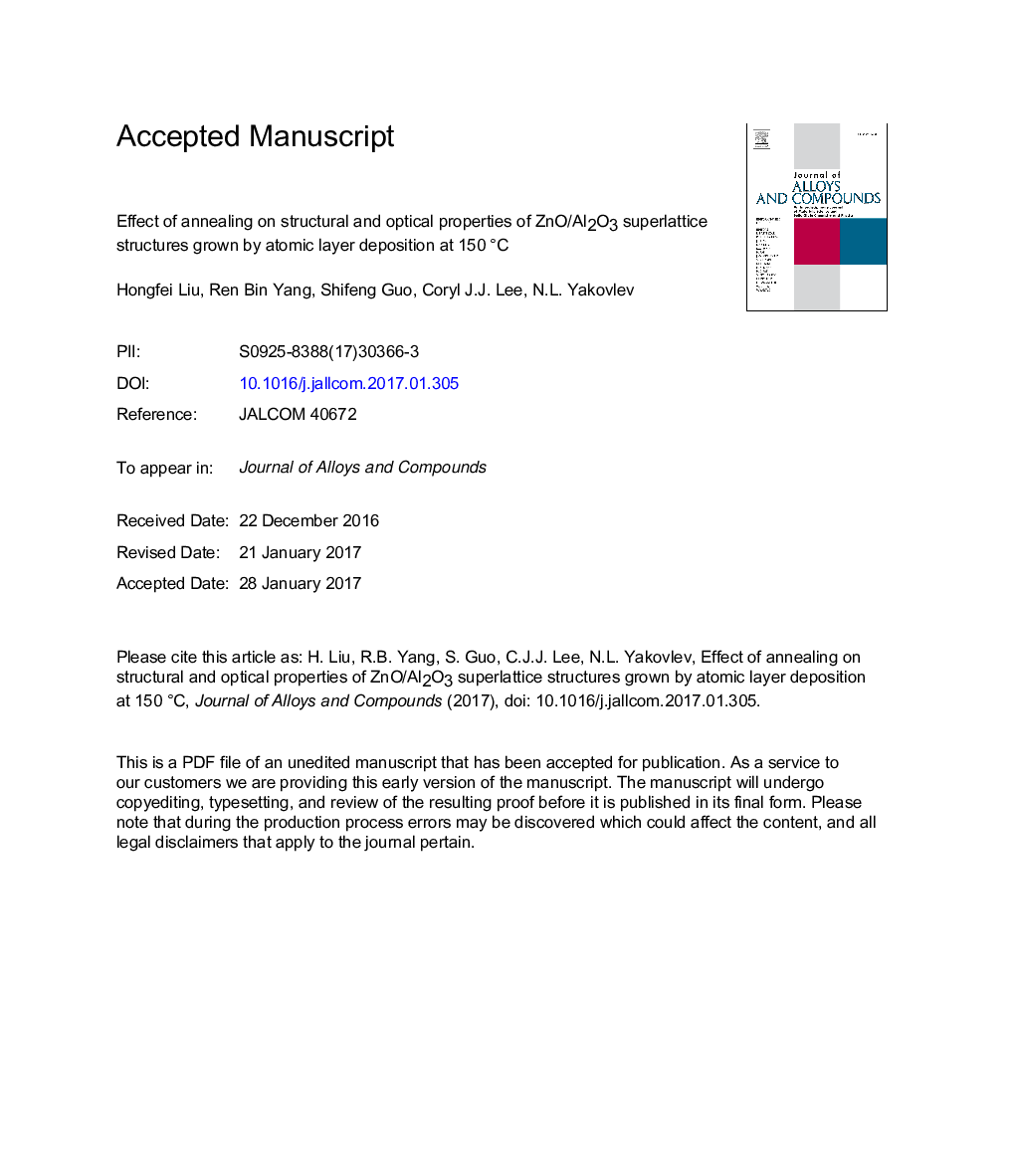| Article ID | Journal | Published Year | Pages | File Type |
|---|---|---|---|---|
| 5460295 | Journal of Alloys and Compounds | 2017 | 26 Pages |
Abstract
ZnO/Al2O3 superlattices, i.e., nanolaminate structures, have been grown by atomic layer deposition (ALD) on Si, sapphire, and quartz substrates at 150 °C. Morphological studies show that an increase in the cycle mixing ratios of Al2O3 to ZnO tends to increase the surface smoothness via suppression of nucleation and growth of ZnO crystallites. X-ray diffraction studies reveal that the orientation of the ZnO crystallites is also affected by changing the cycle ratios of Al2O3 to ZnO under certain ALD conditions. Evolutions in the morphological, structural, and optical properties of the ZnO/Al2O3 nanolaminates upon post-growth annealing provide evidence that atomic interdiffusions occurred at elevated temperatures and the activation/diffusion of Zn atoms in the amorphous Al2O3 layers is much easier/faster than that of Al atoms in the crystallite ZnO layers. By comparing the depth profiles of Al-O, Zn, and Al-H ions measured by secondary-ion mass spectroscopy, we find that hydrogen remains in the Al2O3/ZnO nanolaminates although extensive purge durations were employed in the ALD process. The elemental hydrogen concentrations are higher at the interfaces where the ALD process switches from ZnO to Al2O3 rather than the reverses, which is strongly correlated with the etching behavior observed in an earlier publication [Chem. Mater. 15, 1020 (2003)]. Our findings shed light on further developments and ALD process of ZnO/Al2O3 superlattice structures for practical devices applications.
Related Topics
Physical Sciences and Engineering
Materials Science
Metals and Alloys
Authors
Hongfei Liu, Ren Bin Yang, Shifeng Guo, Coryl J.J. Lee, N.L. Yakovlev,
